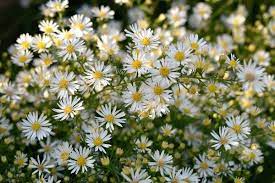**The Importance of Chrysanthemums for the Environment**

Chrysanthemums, beloved for their vibrant blooms and diverse varieties, play a crucial role in supporting and enhancing the environment. These resilient flowering plants contribute to biodiversity, soil health, and ecological balance in various ways. From providing food and habitat for pollinators to improving air quality, chrysanthemums are not only aesthetically pleasing but also beneficial for the ecosystem. Let’s explore the significance of chrysanthemums for the environment and their impact on sustainable gardening practices.
**1. Habitat and Food Source for Pollinators**
Chrysanthemums are valuable plants for pollinators such as bees, butterflies, and other beneficial insects. The nectar-rich flowers attract pollinators, supporting their lifecycle and providing essential food sources. By planting chrysanthemums in gardens and landscapes, gardeners can create habitats that promote pollinator diversity and contribute to the health of local ecosystems.
**2. Soil Health and Nutrient Cycling**
Chrysanthemums play a role in improving soil health and nutrient cycling. As perennial plants, chrysanthemums develop extensive root systems that help aerate the soil and improve its structure. The organic matter produced by chrysanthemum plants enriches the soil, enhancing nutrient availability and promoting microbial activity. This contributes to overall soil fertility and supports sustainable gardening practices.
**3. Erosion Control and Slope Stabilization**
Chrysanthemums, particularly certain ground-covering varieties, are effective for erosion control and slope stabilization. The dense growth of chrysanthemum plants helps prevent soil erosion by reducing runoff and stabilizing loose soil on hillsides or embankments. Planting chrysanthemums in areas prone to erosion can help mitigate environmental damage and protect vulnerable landscapes.
**4. Air Purification and Pollution Reduction**
Chrysanthemums contribute to air purification by absorbing pollutants and volatile organic compounds (VOCs) from the atmosphere. The leaves and flowers of chrysanthemum plants act as natural air filters, capturing pollutants and improving air quality. This makes chrysanthemums valuable additions to urban environments and indoor spaces, where air pollution can be a concern.
**5. Climate Resilience and Adaptability**
Chrysanthemums are adaptable plants that can thrive in various climate conditions, making them valuable for climate resilience in gardens and landscapes. Certain chrysanthemum varieties are drought-tolerant and require minimal water once established, making them suitable for xeriscaping and water-wise gardening. By incorporating chrysanthemums into garden designs, gardeners can create resilient landscapes that withstand environmental challenges.
**6. Biodiversity and Ecological Balance**
Chrysanthemums contribute to biodiversity by supporting a wide range of wildlife, including insects, birds, and small mammals. The presence of chrysanthemum plants in natural habitats enhances ecological balance and promotes species diversity. By preserving and cultivating chrysanthemums, gardeners contribute to the conservation of native plant species and ecosystems.
**7. Sustainable Gardening Practices**
Incorporating chrysanthemums into sustainable gardening practices is beneficial for the environment and promotes ecological stewardship. By choosing native or adapted chrysanthemum varieties, gardeners can conserve water, reduce pesticide use, and minimize environmental impact. Planting chrysanthemums alongside other native plants creates resilient landscapes that require less maintenance and support local biodiversity.
**8. Educational and Recreational Value**
Chrysanthemums have educational and recreational value, serving as teaching tools for environmental awareness and gardening practices. Botanical gardens, arboretums, and public parks often showcase chrysanthemum collections, providing opportunities for public engagement and appreciation of nature. By cultivating chrysanthemums in educational settings, communities can foster a deeper connection with the environment and inspire future generations of environmental stewards.
**Conclusion**
Chrysanthemums are more than just ornamental flowers—they are essential contributors to a healthy and sustainable environment. From providing habitat and food for pollinators to improving soil health and air quality, chrysanthemums play multiple ecological roles that benefit ecosystems and communities. By recognizing the importance of chrysanthemums for the environment and integrating them into sustainable gardening practices, we can cultivate landscapes that are not only beautiful but also resilient, diverse, and ecologically balanced.
**The Environmental Significance of Chrysanthemums**
Chrysanthemums, with their rich diversity and ecological contributions, hold significant importance for the environment. These versatile flowering plants play multifaceted roles in promoting biodiversity, supporting pollinators, and contributing to sustainable landscaping practices. From enhancing soil health to reducing air pollution, chrysanthemums exemplify the intersection of beauty and environmental stewardship. Let’s explore further the profound environmental importance of chrysanthemums and their impact on sustainable ecosystems.
**1. Biodiversity Conservation**
Chrysanthemums contribute to biodiversity by providing habitats and food sources for a wide range of pollinators, including bees, butterflies, and hoverflies. The nectar-rich flowers attract pollinators, facilitating the reproduction of flowering plants and supporting the diversity of insect species. By cultivating chrysanthemums in gardens and landscapes, individuals can play a vital role in conserving pollinator populations and promoting ecosystem resilience.
**2. Habitat Creation for Wildlife**
Chrysanthemums serve as valuable habitats for wildlife, offering shelter and foraging opportunities for beneficial insects and small animals. The dense foliage of chrysanthemum plants provides cover for ground-dwelling creatures and nesting sites for birds. By incorporating chrysanthemums into garden designs, homeowners can create wildlife-friendly landscapes that support local fauna and enhance ecological balance.
**3. Soil Health Improvement**
Chrysanthemum plants contribute to soil health through their root systems and organic matter production. The extensive root network of chrysanthemums helps aerate the soil, improving its structure and promoting water infiltration. As chrysanthemum plants grow and decompose, they add organic matter to the soil, enriching it with nutrients and supporting beneficial microbial activity. This enhances soil fertility and contributes to sustainable gardening practices.
**4. Erosion Control and Slope Stabilization**
Certain varieties of chrysanthemums, particularly ground-covering types, are effective for erosion control and slope stabilization. The dense growth and spreading habit of chrysanthemum plants help stabilize soil on slopes and prevent erosion caused by wind and water runoff. By planting chrysanthemums in erosion-prone areas, gardeners can protect vulnerable landscapes and mitigate environmental damage.
**5. Air Quality Improvement**
Chrysanthemums contribute to air quality improvement by filtering pollutants and volatile organic compounds (VOCs) from the atmosphere. The leaves and flowers of chrysanthemum plants absorb airborne contaminants, including benzene, formaldehyde, and ammonia, thereby purifying indoor and outdoor air. This makes chrysanthemums valuable additions to urban landscapes, gardens, and indoor spaces where air pollution is a concern.
**6. Climate Resilience and Adaptability**
Chrysanthemums exhibit climate resilience and adaptability, making them suitable for diverse environmental conditions. Certain chrysanthemum varieties are drought-tolerant and thrive in arid climates, while others are cold-hardy and withstand freezing temperatures. By selecting regionally adapted chrysanthemum cultivars, gardeners can create resilient landscapes that cope with climate variability and contribute to climate change mitigation.
**7. Support for Sustainable Gardening Practices**
Integrating chrysanthemums into sustainable gardening practices promotes ecological stewardship and environmental sustainability. By choosing native or climate-appropriate chrysanthemum varieties, gardeners can conserve water, reduce chemical inputs, and minimize environmental impact. Companion planting with chrysanthemums supports integrated pest management (IPM) and reduces the need for synthetic pesticides, fostering healthy ecosystems in gardens and landscapes.
**8. Educational and Recreational Value**
Chrysanthemums have educational and recreational value, serving as teaching tools for environmental awareness and horticultural practices. Botanical gardens, arboretums, and public parks often feature chrysanthemum displays that educate visitors about plant diversity and ecological interactions. By engaging with chrysanthemums in educational settings, communities foster a deeper appreciation for nature and inspire environmentally conscious behaviors.
**Conclusion**
Chrysanthemums are essential contributors to a healthy and sustainable environment, embodying the principles of biodiversity conservation, soil health improvement, and air quality enhancement. By recognizing the environmental significance of chrysanthemums and integrating them into ecological landscaping practices, individuals and communities can create resilient ecosystems that support wildlife, promote soil fertility, and mitigate environmental challenges. Chrysanthemums exemplify the beauty and functionality of nature, enriching landscapes and fostering a harmonious relationship between humans and the environment.

